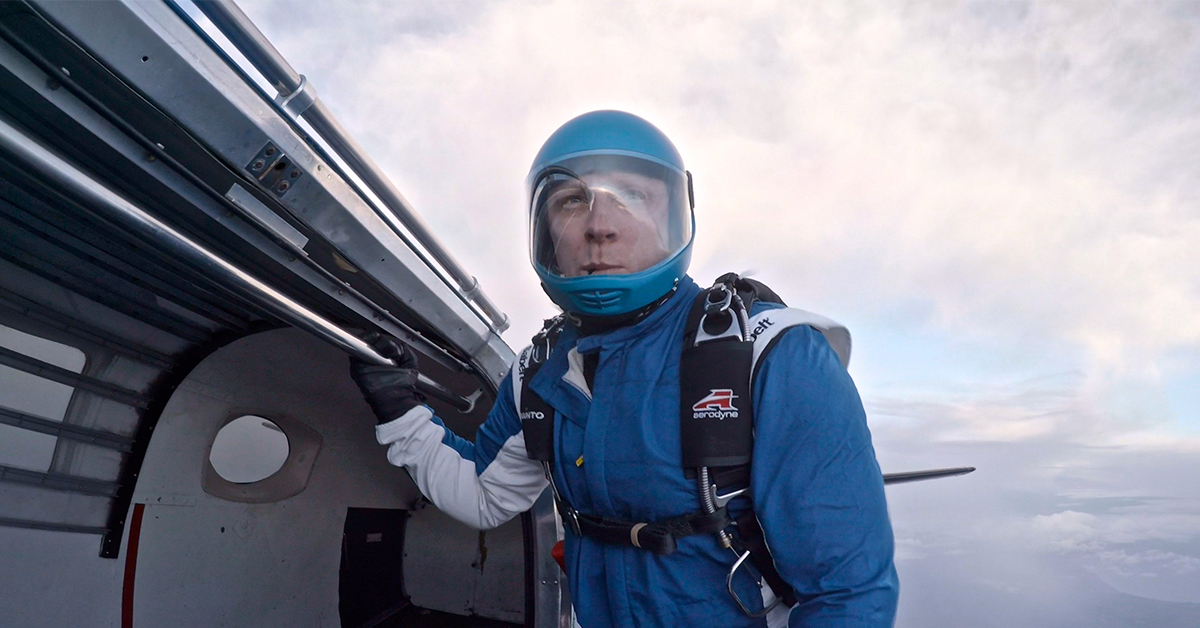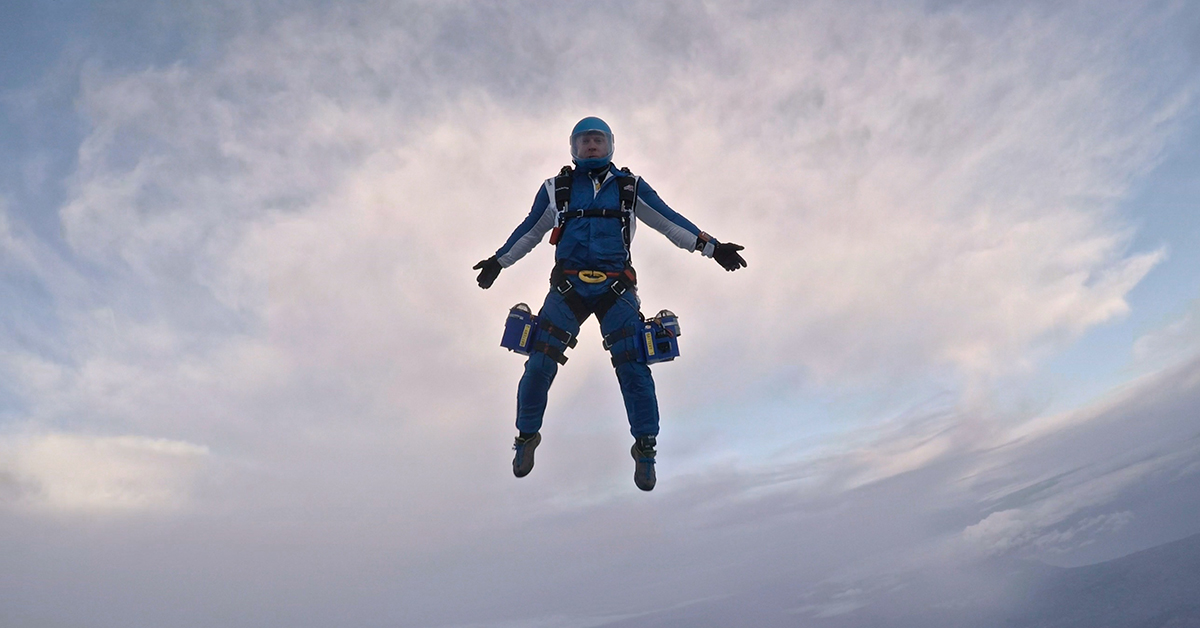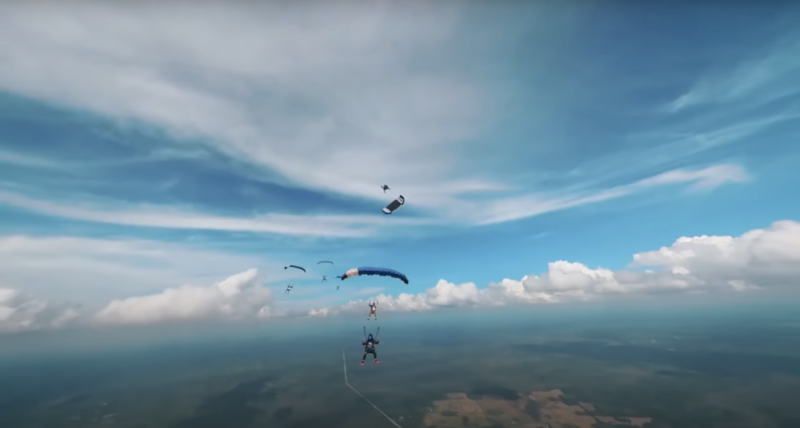Rocket man Andy Torbet gets on with it
Words by (and all images courtesy of) Andy Torbet
There is a first time for everything.
This was not my first jump, not the first time I’d held onto the outside of an aeroplane at 15,000 feet and then, with a nod to my friend facing me, cast off into the blue.
This was, however, the first time I, or anyone, had done it with a pair of prototype electric turbine engines strapped to my thighs.
We were filming for a TV series called Beyond Bionic (which mixed science and technology with wildlife). Unpacking the incredible capabilities of certain species to see if, with the assistance of cutting-edge technology, I could mimic their feats. In the final episode, I was up against the incredible peregrine falcon, the fastest animal in the world – which has been recorded at 242mph in its headfirst dive towards prey. My plan was to try and beat it (for transparency’s sake, I should mention that, since the filming of this series I have gone on to compete at World Championships in speed skydiving and recorded speeds greater than the required 242mph. However, back in 2017 that number had only eluded me).

I collaborated with space engineers and propulsion specialists from the Harwell Campus and the University of Southampton to design the rockets on my legs. My personal primary focus in that work had been safety, rather than performance (this was, after all, only telly). Together, we reduced the snag hazards, positioned the engines to minimise interference with my canopy’s opening, and created a low-tech (but extremely reliable) cut-away system to jettison the machines, should they be caught in my parachute lines – or catch fire in freefall.
In the end, we dispensed with the bag of liquid rocket propellant strapped to my chest to fuel the rockets. Instead, we opted for an electric system of jet turbines. These would not give me as much peak power, but were infinitely safer. Besides: neither the DZ CI, the pilot, nor I, thought the requirement to turn them on inside the aircraft (to warm up before exit) was a great idea.
The controls were kept simple. A simple bite switch would act as the on/off, eliminating the need for complicated controls: all or nothing, leaving my hands free to stabilise the dive. And pull.
On the day of the shoot, myself and the cameraman, my friend Mikey Lovemore, were the only two in the plane. We checked and double-checked my kit. As the red light came on, we opened the aircraft door. Despite the cold January air above Devon, I was relatively cosy in my fire-retardant suit (normally reserved for high-speed motorsports). The light by the door flicked from red to green.
We took the exit slow and steady in order to start from a stable position (and to make Mikey’s job easier). As I slowly moved into a diving position, legs straight and arms sweeping back to match the angle of my body, I had to be aware not to strike the spinning engine-fans with my hands. So far, so good.
However, the jump was not as straightforward as we’d hoped.

The blades should have counter-rotated – that is to say, spun in opposite directions to counteract the torque they’d each produce. Instead, they both spun clockwise. That dynamic caused my body to corkscrew towards the ground. Ironically, the effect was initially created by the relative wind driving the blades to spin: at this point, I hadn’t even turned on the engine.
We had only one jump to record the jump for the programme. One shot. We had to nail it.
So, with one foot dragging in the air column – creating drag, but hopefully sufficient to keep me roughly on the line – I bit down on the switch.
I never expected to feel much thrust, so that part wasn’t a surprise, but I did feel the increased need to attempt to counteract the rotation. As I moved – less predictably than the ideal – Mikey fought to stay close, and to keep me in frame.
It wasn’t until the audible sounded off in my helmet, and I was forced to rapidly slow my descent, that I felt just how fast I was going.
Imagine slowly accelerating. You wouldn’t feel much, right? Now: keep accelerating. Don’t let up. Now: slam on the brakes with everything you’ve got. That’s the feeling.
I flared my body, creating as much drag as possible to bleed off the excessive speed. The opening shock snapped the 3D-printed plastic holding the right thruster to my harness. It began to slide down my leg. I bent at the knee and kept it bent – eventually performing a one-legged landing in order to prevent the machine from falling off.
Job done.
Back on the ground, we analysed the data from our one-shot, imperfect jump. The result: 257mph, making the peregrine falcon the second fastest animal in the world.



